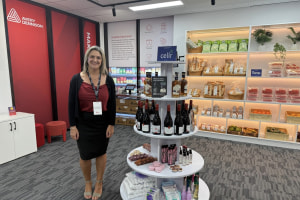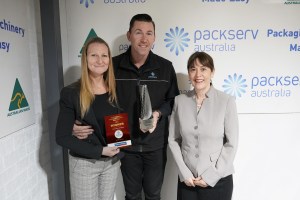New forklifts promising cleaner, greener credentials without sacrificing performance were recently demonstrated in Sydney by Hyster-Yale Group.
The new hydrogen-powered forklifts offer the performance and refuelling speed of typical conventionally powered alternatives, but with the sustainability of electric motors. With only water vapour and heat as by-products, hydrogen fuel cells produce zero emissions.
“The new hydrogen-powered forklift trucks are aimed particularly at companies seeking the ultimate combination of environmentally harmonious indoor and outdoor performance, without having to interrupt production cycles or have vehicles out of service for lengthy charging or battery changing,” Hyster-Yale Asia-Pacific managing director Tony Fagg said.
“We believe that, not only are these the first hydrogen powered forklifts in Australia or New Zealand, but also that such practical hydrogen-powered vehicles as these show the way ahead for a whole new generation of future-focused work vehicles, and perhaps ultimately for passenger vehicles.”
Fuel cell vehicles are fueled and refueled by a hose from a dispenser in the same way that typical work vehicles and cars and trucks are refuelled at a petrol or diesel bowser, and refuelling only takes a few minutes.
Overseas, companies like Amazon and Walmart have already moved to embrace hydrogen-powered forklifts. Although the Hyster forklifts are currently only available in the US and Canada, they are expected to roll out more broadly in coming years, according to the company.
The main obstacle in Australia, according to Hyster-Yale, is that the forklifts require a steady, cost effective supply of hydrogen. This can be delivered, or generated on-site using a fleet dispenser system such as Hyster-Yale’s Nuvera system.
This on-site hydrogen generation and fueling equipment consists of a compact hydrogen generator and auxiliary equipment located outside of the building, eliminating the significant indoor space required for battery charging and storage rooms, enabling more efficient use of space, while growing throughput capacity.
The Nuvera fuel cell systems used in the forklifts replace lead acid batteries. The hydrogen dispenser pumps hydrogen into the cell’s hydrogen storage tank. As long as the fuel cell is supplied with hydrogen and oxygen, it will generate electricity to power the forklift’s electric motor.
In the process of the hydrogen fuel’s conversion to electricity through a chemical reaction in the cell, electricity is produced, which is used to power the electric motor that drives the vehicle.
The process is very clean because, unlike a conventional fossil fuel engine, a fuel cell doesn’t burn the hydrogen. Instead, it’s fused chemically with oxygen, producing electricity and water, which is the primary emission from the vehicle.
On average, companies that generate hydrogen on-site can expect a 33 per cent average reduction in greenhouse gas emissions compared to lead acid battery systems charged from the electrical grid, according to Hyster-Yale.
The technology suits: multi-shift operations that want to reduce battery replacement downtime; growing operations that need additional indoor space; operations that want to reduce their carbon footprint; and those operating in confined settings in which air quality is important.






